
An OER Anthology of Earlier American Literature to 1899
- Subject:
- Arts and Humanities
- Reading Literature
- Material Type:
- Primary Source
- Textbook
- Provider:
- Press Books
- Author:
- Robin DeRosa
- Date Added:
- 11/08/2015

An OER Anthology of Earlier American Literature to 1899

This lesson uses images and the "I See...and I Wonder" strategy to get students thinking about the bigger concepts that objects might represent. Students often see symbols as mere objects with only a face value because of the speed with which they encounter them. However, if we can encourage students to take more time to study an object, other concepts or meanings can come to light.This lesson uses images as an entry point to symbolism because they are less threatening than literature. The images provided are a starting place, but feel free to remix and use your own images.
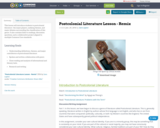
This lesson will introduce students to postcolonial literature--the major players, unifying themes, and major debates surrounding the classification of this genre. It also contains links to readings, discussion questions, and a collaborative project aligned to multiple Common Core standards.

This lesson contains an instruction video and assessment in Google docs on characterization in literature. It can be used with any literary text.
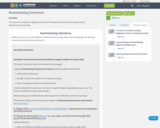
The resources included are designed to help both students and teacher work through the ELA Standard on summarizing..

The activities, assignments, and lessons included here are designed to help students read and write like artists who constantly take apart old ideas and texts in order to repackage them for the sake of contemporary humor, wisdom, and relevance. The activities introduce new vocabulary for discussing how texts work and play, as well as synthesis, analysis, and creativity.
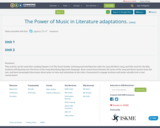
This activity can be used after reading Chapter 5 of The Great Gatsby. Listening and watching the video for Lana Del Rey's song, and title track for the film, students will dig deep into the lyrics of the song identifying figurative language, draw connections between the lyrics of the song and direct quotes from the text, and have meaningful discussion about point-of-view and symbolism in the video. Guaranteed to engage students and make valuable text to text connections!

During days 3-6 of the unit, students will complete a short, focused research assignment to learn about the characteristics of Sourthern Gothic Literature and to begin to view To Kill a Mockingbird through that lens. As is true with the rest of the unit, the three day time frame is a suggestion only and can be adjusted based on your schedule and the needs of the students.Image source: "Mockingbird" by skeeze on Pixabay.com.
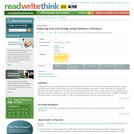
Students make sense of dollars and cents when they study the importance of saving and budgeting in this lesson.

Kristjan Jaak Peterson was an Estonian poet, commonly regarded as a herald of Estonian national literature and the founder of modern Estonian poetry and on his birthday is celebrated in Estonia as Mother Tongue Day. This OER gives an opportunity to teach that topic in Estonian (or Estonian as foreign language) lesson and intergrade it with IT, art and literature. Topic should covered in 4 lessons (worksheets are in Estonian): 1st lesson: Presentation about Kristjan Jaak Peterson´s life; crossword and Kahoot game. 2nd -3rd lesson: Creating akrostichon, reading in voice file, creating poster in MS word with poem, picture and added QR code.4th lesson: Presenting work to other students

This lesson supplements the Women Who Changed the World website from the Nobel Prize Organization. A video and link to an interactive activity is accompanied by project ideas, topcis for extension, and additional resources.
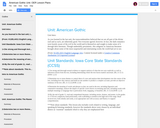
In this unit students gain an understanding of the elements of gothic literature as evidenced in four short stories: The Raven (Poe), The Masque of the Red Death (Poe), The Yellow Wallpaper (Gilman), and the Lottery (Jackson). Vocabulary is included for each story. Lessons focus on using text evidence to support analysis for tone, diction, inferencing, character analysis, author's purpose, and irony. Lessons include both independent and small group work, shorter writing tasks, small and large group discussion, and other opportunities for instructors to differentiate the lesson to suit classroom needs.
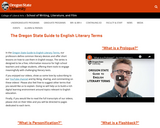
This free video series provides definitions of literary terms in English literature to students and teachers. It also offers examples of how these literary devices can be applied to poems, plays, novels, and short stories. We are in the process of translating the videos into Spanish and many of them now contain these subtitles.
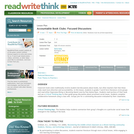
Students form literature circles, read "Esperanza Rising" or "Becoming Naomi Leon" by Pam MuĐoz Ryan, use a Critical Thinking Map to discuss social issues, and use a class wiki.

The Folger Shakespeare Library provides the full searchable text of "Macbeth" to read online or download as a PDF. All of the lines are numbered sequentially to make it easier and more convenient to find any line.
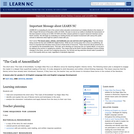
The short story "The Cask of Amontillado," by Edgar Allan Poe is an effective venue for teaching English I literary terms. The following lesson plan is designed to engage the reader in a deeper than superficial reading of the text. It is also designed to elicit discussion and written critical-thinking responses. This lesson assumes that the literary terms have already been introduced. However, if they have not, the teacher may use this lesson to introduce these terms in the context of the literature.

A short quiz on CCSS.ELA-Literacy.RL.9-10.6 featuring two verses from the Tao Te Ching, as translated by Tormond Byrn. The passages have a Dale-Chall text difficulty index of 5-6 and a Flesch-Kincaid level of 3.6.

The 7th grade poetry unit gives an in depth approach to poetry involving the four strands within the core. I've included worksheets, rubrics, and answers keys where applicable. I have also used literature examples from the core.
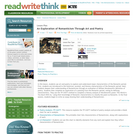
Students use art and poetry to explore and understand major characteristics of the Romantic period.
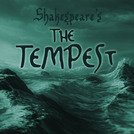
This is a teacher and students' resource pack for Shakespeare's The Tempest. The resource is for the F.E.T phase, grade 10-12. It contains summary notes and resources for constructive engagement by both students and teachers.

Students will read and analyze a short story from the Southern Gothic genre entitled "The Life you Save May be Your Own" by Flannery O'Conner. They will continue to explore the ideas of human compassion and morality by examining the apparent lack of compassion in the characters of Mr. Shiftlet and the old woman, Lucynell Crater. Students will use close reading strategies to identify examples of indirect characterization that contribute to their analysis of these two central characters in the text. Image source: "Mockingbird" by skeeze on Pixabay.com.

It is a vital skill to learn to respond to what we read. Teach students the important skill of sharing books by creating a book report with this simple lesson plan. There are a variety of options for students to choose from and a rubric attached.

Module over W.W. Jacobs "The Monkey's Paw"
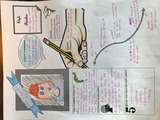
This mini-unit is an introduction to poetry and can be used in middle school or early high school. Each lesson should take about an hour and covers basic such as: Prose vs. Poetry, Traditional vs. Organic Poetry, poetry structure, figurative language and sound devices, context clues, tone, and meaning. Several examples of poems are provided along with notes, guided practice, and indepent assessments.
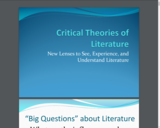
The PDF is literary criticism in English Literature. Various theories are well explained with appropriate examples of British Literature.

This lesson uses images and the "I See...and I Wonder" strategy to get students thinking about the bigger concepts that objects might represent. Students often see symbols as mere objects with only a only face value because of the speed with which they encounter them. However, if we can encourage students to take more time to study an object, other concepts or meanings can come to light.This lesson uses images as an entry point to symbolism because they are less threatening than literature. The images provided are a starting place, but feel free to remix and use your own images. This journaling activity is about writing (and discussing) to learn. It can be graded or just formative. Either way, items to assess would include:Do students really dig into the details, both large and small?Are they being thorough "readers" of the image in the quality of their "wondering"? There is no length requirement, but the timer recommendations do communicate an expectation that responses to be more than just a sentence or two or a very brief list.For task 2, do students begin to make some interpretive claims? Are those claims valid? Are they grounded in the details?If students are struggling to make interpretive claims that make sense with the image, back up and do another image in small groups that might allow more modeling, deeper thinking prompts, or even questioning the students to better understand their interpretations.If students are successful with the images, transition to a short peice of text like a poem. Students can use the same process of "I See...and I Wonder." The Task 2 questions can be slightly modified to apply to text rather than image.
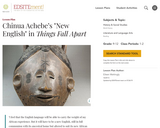
This lesson provides a Common Core application for high school students for Chinua Achebe's novel Things Fall Apart. Students will undertake close reading of passages in Things Fall Apart to evaluate the impact of Achebe's literary techniques, the cultural significance of the work, and how this international text serves as a lens to discover the experiences of others.

This is a general template to pair with any piece of fiction you have your students read. The year I created this I saw that my 8th grade studetns at the time were struggling with engaging with any text, most were reading below grade level. They beleived reading to be boring and were missing a lot of background knowledge concerning literary elements. I created this template and paired it with their favorite novel (Diary of a Wimpy Kid) I found that they were engaged when filling out these "Guided notes". It helped bridge some gaps and gave them a renewed confidence in the classroom.

People often say that mankind should learn from history. Charles Dickens, whose books are considered classics, set his novel A Tale of Two Cities in the past. He wanted his readers to learn from the bloody French Revolution and from the widespread brutality in London. Both cities (Paris and London) offer the reader a glimpse into dark and dangerous times. As students read about Dickens's Victorian setting and learn his view of the French Revolution, they will think about what makes a just world. Students will have a chance to think about their own experiences, and, using techniques they have learned from Charles Dickens, they will do some writing that sends a message about your own world.
ACCOMPLISHMENTS
To complete the unit accomplishments, students will:
Read the Charles Dickens novel A Tale of Two Cities.
Read several short pieces, including a biography of Dickens and excerpts from other literature, to help them understand Dickens’s world and the world of the novel.
Explore new vocabulary to build their ability to write and speak using academic language.
Practice close reading and participate in several role plays and dramatic readings to help them experience the dramatic writing style of Charles Dickens.
Write a vignette and a short narrative piece, and practice using descriptive detail and precise language.
Write a reflection about the meaning of Dickens’s novel.
GUIDING QUESTIONS
These questions are a guide to stimulate thinking, discussion, and writing on the themes and ideas in the unit. For complete and thoughtful answers and for meaningful discussions, students must use evidence based on careful reading of the texts.
How does good storytelling affect the reader, and how can a good story promote change in the world?
What was the Victorian view of gender roles?
How can power be abused?
What is loyalty ? What are the limits of loyalty?

The Global Digital Library (GDL) has been developed to increase the availability of high-quality reading resources in underserved languages worldwide where there is currently a lack of quality early grade reading resources. The site primarily hosts reading instruction books and storybooks for leisure reading, but the GDL will also link to more interactive resources, such as literacy games.
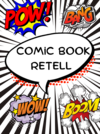
In this Unit Plan, Students will use Book Creator to create a comic of the story they have independently read in class. Students will independently use the resource I generated on how to use each function to create their comic. Then use the Criteria for Success ( cfs) to evaluate their own work, and share their work to peers.
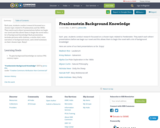
Each year, students conduct research focussed on a chosen topic related to Frankenstein and the 1800s. They watch each others' presentations before we begin our novel and this allows them to begin the novel with a lot of background knowledge!
Each presentation includes pictures with citations, a works cited, voice narration or background music, and a brief summary on their chosen topic. Enjoy!
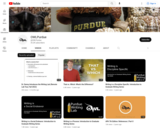
The Purdue Online Writing Lab is a lab at Purdue that I have been using for over 20 years as a resource to help my students with writing organization, MLA formatting, citation, and even grammar. This is a youtube channel specific to the lab and writing. These are open and available on youtube.
For example, there is a youtube video on Paragraph Organization and Flow. From the video: In this IWE lecture, Heather from the Writing Lab helps thesis and dissertation writers organize their writing at the paragraph level and addresses the hard-to-define but all-too-important quality of "flow."
These are oriented towards upper level high school students and college/university students.

Using the C3 Inquiry Design Model format, high school social studies and English students learn to understand lynching in Virginia in the Jim Crow South and discuss ways of taking informed action to move towards racial healing. Each inquiry is supported by the Virginia Standards of Learning and the Common Core Standards and is expected to take three-four 50-minute class periods. The inquiry time frame can expand if teachers think their students need additional instructional experiences (e.g., historical context, formative performance tasks, featured sources, writing, etc.). Teachers are encouraged to adjust the inquiry to meet the needs and interests of their students and school/community contexts. The inquiries lend themselves to differentiation and modeling of historical thinking skills while assisting students in reading a wide variety of sources and writing in a wide variety of genres.Use the next button or the drop down menu to navigate between pages. Please note, Social studies lessons are found at the bottom of page 2 and English lesson are found at the bottom of page 3. For more information and/or access to the primary sources used in the lesson plans, please visit the Racial Terror: Lynching in Virginia website.
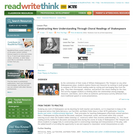
After reading "The Tempest" or any other play by William Shakespeare, students work in small groups to plan, compose, and perform a choral reading based on a character or theme.
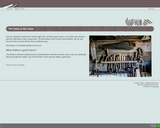
This lesson was designed for English 9 students as an introduction to literary devices at the beginning of a short stories unit. The ultimate goal will be that students can analyze a story, explaining how an author uses these devices to create literature, but this lesson specifically focuses on domain-specific vocabulary.
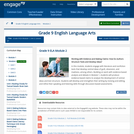
In this module, students engage with literature and nonfiction texts that develop central ideas of guilt, obsession, and madness, among others. Building on work with evidence-based analysis and debate in Module 1, students will produce evidence-based claims to analyze the development of central ideas and text structure. Students will develop and strengthen their writing by revising and editing, and refine their speaking and listening skills through discussion-based assessments.
Find the rest of the EngageNY ELA resources at https://archive.org/details/engageny-ela-archive .

PowerPointMentimeterKahoot

Jason Allen offers a comparative discussion of two important Caribbean poets and playwrights, Aime Cesaire and Derek Walcott, to emphasize the impact of Caribbean literature upon the postcolonial world. By using biographical and historical detail to support his analysis of some of Cesaire and Walcott's key texts, Allen offers insight into what it means to be a Caribbean writer - looking back to a colonial past, and forward to a global future. This audio recording is part the Interviews on Great Writers series presented by Oxford University Podcasts.
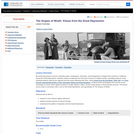
Students use Library of Congress primary sources to examine the lives of migrant workers in California during the Great Depression.